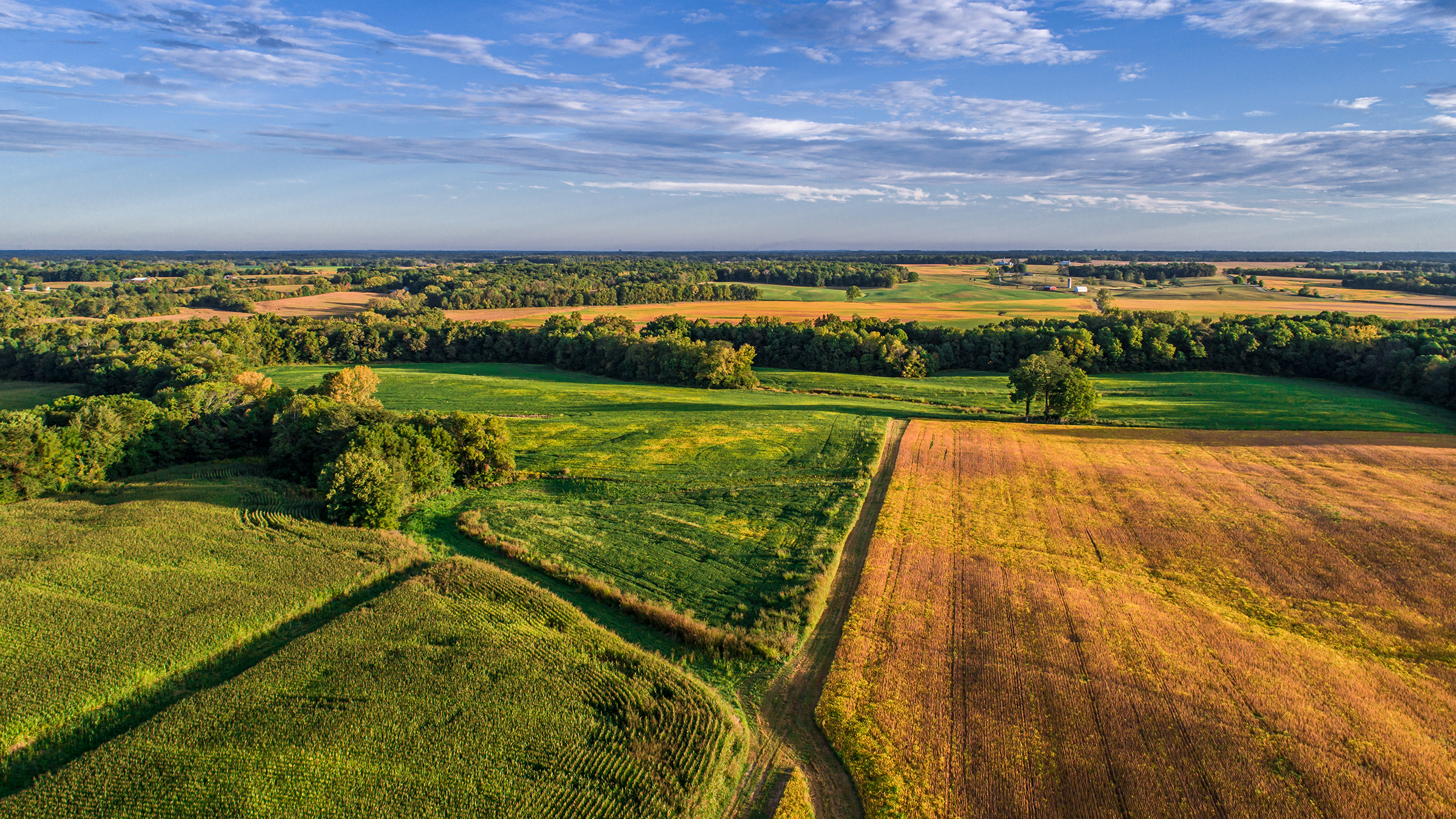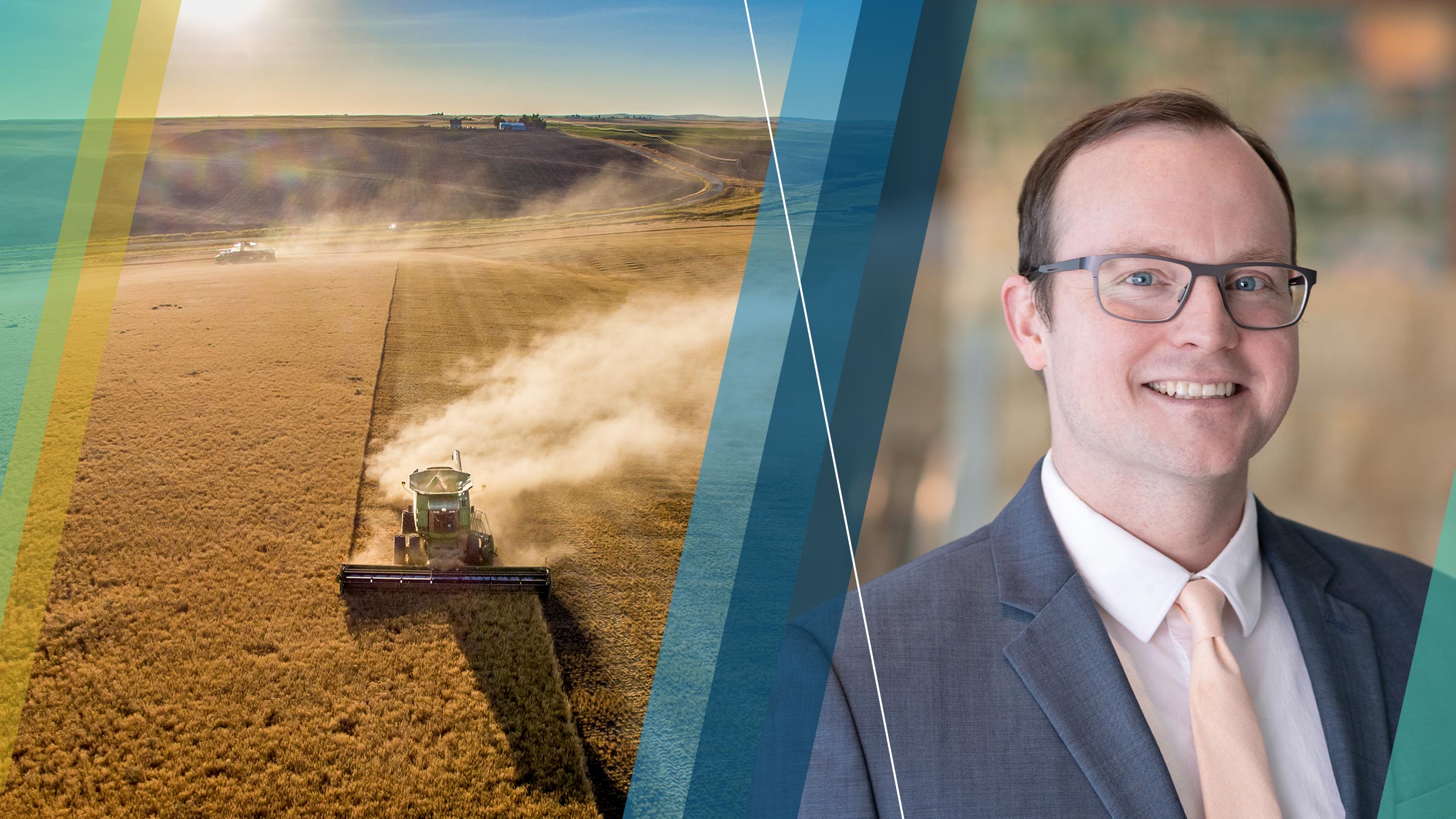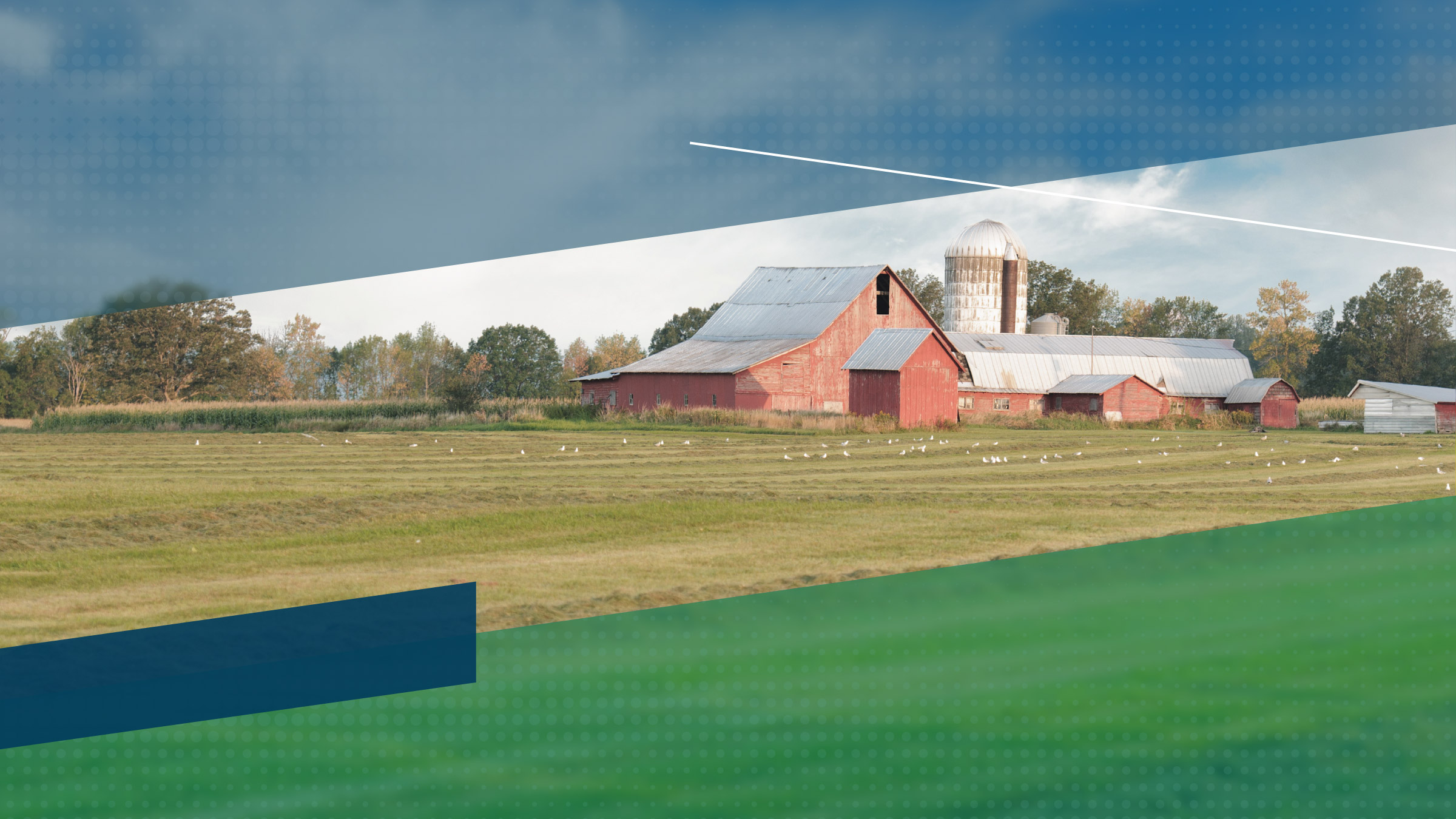Farm and Farmland Facts
- The USDA defines a farm as any place that produced and sold at least $1,000 of agricultural products during a given year.
- Family farms represent 98 percent of all farms.
- On family farms, the farmers are more likely to be full owners of land they operate—45 percent of farmland is in small family farms.
- As of 2019, land in farms accounts for 897.4 million acres in the United States—about 40 percent of the U.S. land area.
- The USDA estimates the value of farm real estate at $2.6 trillion, accounting for 80 percent of farm sector assets.
As total cash receipts from commodities continue to decline since their peak in 2014, the resiliency of farmland values has confounded many people because the income that can be generated from the land is an important factor influencing farmland values.1 Farmland that can generate more product for a given level of inputs will have higher returns and a higher value per acre. Conversely, as returns decrease for a given level of inputs, farmland values would be expected to decrease. With the recent declines in cash receipts and farm income, why have farmland values remained so strong?
Let’s take a closer look by comparing the commodity and livestock returns and farmland values.2 Chart 1 shows commodity and livestock returns, excluding government payments.3 Commodity returns for corn, soybeans, and wheat peaked in the early 2010s and have continued to decline since then, remaining negative or near break-even. Cow-calf returns per cow were negative for the entire time, reflecting the extensive labor and capital costs associated with these operations. Chart 2 shows farmland values per acre by use over the same period for the Ninth District and the United States. Farmland values steadily increased and peaked in mid-2015. Notice, however, that farmland values do not follow the same trajectory as commodity and livestock returns. Farmland values have decreased slightly from their peak but have remained relatively stable for all land types.
Although there are financial factors to consider when purchasing farmland,4 the purpose of this article is to identify and explain several nonfinancial factors or values held by producers that can influence farmland purchases. Buying farmland is important to farmers and ranchers—even at values that do not appear to be supported by commodity and market prices. Farming and ranching operations are unique and have different managerial and operational styles. Therefore, the factors discussed below may not apply to a particular operation.
Farmland for sale is rare—Farmers and ranchers know that the opportunity to purchase farmland is rare. According to a study conducted by the U.S. Department of Agriculture (USDA),5 roughly 10 percent (93 million acres) of all farmland was expected to transfer between 2015 and 2019. The study found that the majority of those land transfers would occur via trusts, wills, and gifts. The remaining farmland would be sold to family or on the open market. The study found that the amount of farmland expected to be sold on the open market between 2015 and 2019 represented 2 percent of all farmland in the United States (23 percent of 10.2 percent), or less than 1 percent of all farmland annually.
Some land is even more rare—As noted above, farmland for sale is rare. But even more rare is farmland for sale adjacent to or near a producer’s existing land. In most cases, if a producer has the opportunity to purchase a parcel adjacent to her or his land, the producer will most likely do anything necessary to buy the land. Purchasing that nearby parcel brings many benefits for which farmers and ranchers would pay a premium—logistics, conservation, drainage, water rights, access rights, and easements. The opportunity to buy that specific parcel of farmland is so rare and so beneficial that producers are willing to pay a premium for the land.
Expand the operation—Farmers and ranchers purchase farmland because they want to increase the size of their operation. However, the reason for expanding farmland acres varies for each operation. Perhaps the operators want to add another partner, so they need more farmland to support the partnership. Maybe the family farm needs to expand because children are moving back home to eventually take over the operation. In some cases, the reason for buying farmland is as simple as fitting into the operation’s expansion plans and growing the business.
Independence—Farmers and ranchers value independence in how they manage their operations. Owning, rather than renting, farmland provides producers with operational independence and decision-making authority so they don’t need to consult other parties to make decisions. Delays and indecision cost time, money, and opportunities. Owning farmland allows producers flexibility with the land. They know that they can grow a different crop, expand the herd, or make improvements.
| State | Number of Farms | Average Farm Size (acres) | Total Farm Acres* | % of Land Area as Farmland |
|---|---|---|---|---|
| Minnesota | 68,000 | 375 | 25,500,000 | 50.0% |
| Montana | 26,800 | 2,164 | 58,000,000 | 62.3% |
| North Dakota | 26,100 | 1,506 | 39,300,000 | 89.0% |
| South Dakota | 29,600 | 1,459 | 43,200,000 | 89.0% |
| Wisconsin | 64,900 | 220 | 14,300,000 | 41.3% |
Owning land also provides the owner with financial independence. Owners can rent out the land for additional income or leverage equity for future business decisions. Equity can be used to finance operations in lean times or for capital purchases. Existing farmland equity can be used to support the acquisition of additional farmland and further expand the operation.
Farming and ranching are long-term, multigenerational enterprises. Purchasing farmland is part of an enterprise’s strategic plan to benefit the farming and ranching operation over multiple generations. Understanding that nonfinancial factors greatly impact the decision to purchase farmland can help us understand why producers value farmland for more reasons than dollars per acre. While the reasons listed above are not all-inclusive and do not apply to all situations, they can explain the other factors at play when farmers and ranchers consider purchasing farmland and why price-per-acre alone does not indicate the true value to the purchaser.
Endnotes
1 Christopher Burns, Nigel Key, Sarah Tulman, Allison Borchers, and Jeremy Weber. Farmland Values, Land Ownership, and Returns to Farmland, 2000-2016, ERR-245, U.S. Department of Agriculture, Economic Research Service, February 2018.
2 The Ninth District farmland values are submitted by respondents to the Quarterly Agricultural Credit Conditions Survey. The farmland values are nominal. The U.S. farmland values are from the USDA’s annual Agricultural Land Values Survey.
3 Commodity returns are dollars per planted acre, and livestock returns are dollars per cow for cow-calf operations. The USDA calculates the net value of production by subtracting operating and overhead costs from the value of production, not including government payments. More information can be found at the USDA’s Commodity Costs and Returns webpage.
4 Financial factors include, but are not limited to, cash returns per acre, interest rates, government program payments, cost of ownership, insurance, and taxes.
5 Daniel Bigelow, Allison Borchers, and Todd Hubbs. U.S. Farmland Ownership, Tenure, and Transfer, EIB-161, U.S. Department of Agriculture, Economic Research Service, August 2016.






